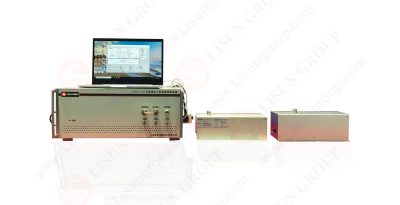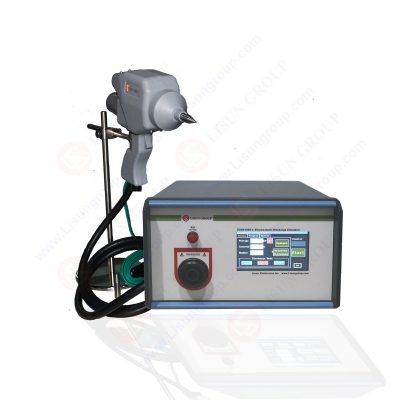Electrical and radio-frequency disturbances occur during normal operation of many items of motor vehicle equipment. They are generated over a wide frequency range and can be distributed to on-board electronic devices and systems by conduction, coupling or radiation.
In recent years, an increasing number of electronic devices for controlling, monitoring and displaying a variety of functions have been introduced into vehicle designs. It is necessary to consider the electrical and electromagnetic environment in which these devices operate and, in particular, the disturbances generated in the vehicle electrical system itself. Such disturbances can cause degradation (temporary malfunction or even permanent damage) of the electronic equipment. Moreover, “worst-case” situations are usually those resulting from disturbances generated inside the vehicle by, for example, ignition systems, generator and alternator systems, electric motors and actuators.
Standards:
Immunity to radiated disturbances for vehicles:
ISO11451<Road vehicles-Vehicle test methods for electrical disturbances from narrowband radiated electromagnetic energy>
Immunity to radiated disturbances for components:
ISO11452<Road vehicles-Component test methods for electrical disturbances from narrowband radiated electromagnetic energy>, GB/T17619
Immunity to conducted disturbances for components:
ISO7637<Road vehicles-Electrical disturbances from conduction and coupling>, GB/T21437
Immunity to electrostatic discharge (ESD) for vehicle and for components:
ISO10605<Road vehicles-Test methods for electrical disturbances from electrostatic discharge>, GB/T19951
1. Both ISO11451-4 and ISO11452-4 are bulk current injection (BCI) test methods. This part specifies BCI test methods for testing the electromagnetic immunity of electronic components for passenger cars and commercial vehicles regardless of propulsion system (e.g. spark-ignition engine, diesel engine, electric motor).
BCI is a method of carrying out immunity tests by inducing disturbance signals directly into the wiring harness by means of a current injection probe. The injection probe is a current transformer through which the wires of the device under test (DUT) are passed. Immunity tests are then carried out by varying the test severity level and frequency of the induced disturbance. The standard specifies that for testing automotive electronic system, the applicable frequency range is 1MHz to 400MHz, and BCI shall be conducted on each individual system fitted to the vehicle.
LISUN LSBCI-40 Bulk Current Injection (BCI) Test System fully meet standard ISO11452-4, GB/T17619, GB/T32960.2-2016 and etc. It supports to open-loop test method and closed-loop test method (Add options according to customer requirement), 100KHz ultra-low starting frequency which is enough to meet the test requirements of global auto companies. Please click here to learn more about this equipment: LSBCI-40 Bulk Current Injection Test System

LSBCI-40 Bulk Current Injection Test System
2.ISO7637-2 <Electrical transient conduction along supply lines only> specifies test methods and procedures to ensure the compatibility to conducted electrical transients of equipment installed on passenger cars and commercial vehicle fitted with 12V or 24V electrical systems. It describes bench tests for both the injection and measurement of transients. It is applicable to all types of road vehicles independent of the propulsion system (e.g. spark-ignition or diesel engine, electric motor).
LISUN EMS-ISO7637 Automotive Multifunctional Immunity Test System includes all the waveforms required by ISO7637-2: 2011 standard (ISO16750-2 is optional). It fully meets newest ISO7637-2 requirement of<Road Vehicles – Conductive Coupling Electrical Interference – Part 2 Electrical Transient Conductivity Tests for Power Lines>, and it meets most of automotive manufacturer’s requirement for automotive electronic immunity test. Please click here to learn more about this system: EMS-ISO7637 Automotive Multifunctional Immunity Test System

EMS-ISO7637 Multifunctional Immunity Test System For Automotive Electronics
3.Sensitive electronic devices can be adversely affected by energy either coupled or radiated from electrostatic discharges. This International Standard ISO10605 <Road vehicles-Test methods for electrical disturbances from electrostatic discharge> specifies the electrostatic discharge (ESD) test methods necessary to evaluate electronic modules intended for vehicle use. It applies to discharges in the following cases: ESD in assembly, ESD caused by service staff, ESD caused by occupants.
This International Standard is based in part on IEC61000-4-2 and describes vehicle-specific requirements, it applies to all types of road vehicles regardless of the propulsion system (e.g. spark-ignition engine, diesel engine, electric motor)
LISUN ESD61000-2 Electrostatic Discharge Simulator (static discharge gun or esd testing gun) is in full compliance with ISO10605, IEC 61000-4-2, EN61000-4-2, GB19951, GB/T17626.2, GB/T17215.301 and GB/T17215.322. The ESD test gun is designed for the withstanding ESD performance measurement for the assessment of electrical and electronic equipment. It has a LCD touch screen in both English and Chinese, and equipped with infrared controller can be used in special occasions. Please click here to learn more about this equipment: ESD61000-2 Electrostatic Discharge Simulator

ESD61000-2 Electrostatic Discharge Simulator
Your email address will not be published. Required fields are marked *